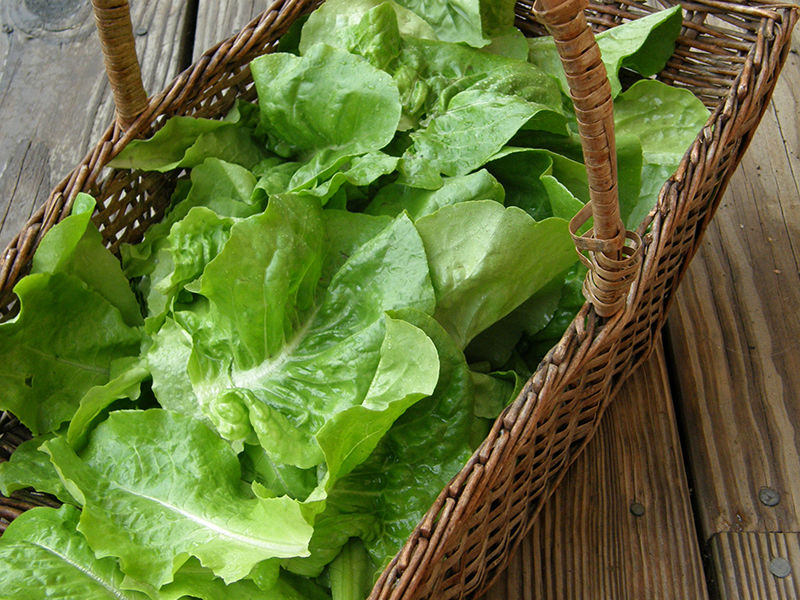Maximize that lettuce
It feels like we wait all year for fresh lettuce, and the window seems to close quickly. How can we maximize lettuce season? While lettuce is easy to grow, factors like temperature impact how well it does. Understanding timing and varieties can help yield a continuous supply throughout the summer and beyond.

Lettuce is generally considered a cool-season crop, meaning that it thrives in temperatures between 60-65 degrees Fahrenheit. With its heat-sensitivity, once the daytime temperatures exceed this range, lettuce can bolt. Bolting is when the plant puts all of its energy into producing a flower. Bolted lettuce is tall, the leaves are tough, and the flavor is bitter.
This reality makes maintaining a lettuce crop through the traditionally hot months of July and August difficult. The key is to strategically use different lettuce seed varieties throughout the summer.
Lettuce can be planted as soon as the soil thaws (3-4 weeks before the last frost). Covering the bed with fabric row covers can help keep out snow and warm the air and soil around the plants. The same can be done on the other end of the growing season, extending the harvest of fresh salad greens into November.
Once it becomes warmer (around late June), it’s time to switch to a more heat-tolerant variety such as Muir, Red Cross, Adriana and Coastal Star. Check the back of seed packets or seed catalogs for information about heat-tolerance.
Try to plant a new crop of lettuce every three weeks or so. Set a reminder for yourself on the calendar or leave the seed packets by the door with a note to remind you.
When September rolls around and the air begins to cool, you can switch back to non-heat-sensitive seeds, including many varieties of bibb, butterhead and oakleaf lettuce, and utilize row covers to prevent frost from wilting your hard-earned greens. Make sure to water your lettuce crop regularly. Lettuce gets bitter quickly, and letting the soil dry out completely will make the whole row inedible.
Plan to harvest lettuce within 2-3 weeks during warmer weather and 3-4 weeks in colder weather. When harvesting lettuce, I like to use scissors to cut the leaves just above the soil line. Leaving the root intact reduces the amount of dirt I have to rinse off before dinner.
After picking, I quickly bring the container of lettuce indoors and fill with cold water. Like a washing machine, I gently stir the lettuce with my hand several times to get the loose dirt to settle to the bottom of the bowl. Then I drain, rinse and repeat.
I really don’t enjoy insects or sand in my salad, so I rinse each leaf individually under cold water. To make this step more efficient, I let the leaves sit in cold water for 10-15 minutes before rinsing to let the dirt particles settle to the bottom of the bowl while the leaves float on top. After inspecting each leaf, I use a salad spinner to remove excess water from the leaves.
To store lettuce in the fridge, a salad spinner seems to keep the right balance of moisture to air, but often they take up too much room in the fridge. In this case, I follow the lead of many Community Supported Agriculture farmers and store the spinner-dried lettuce loosely in re-sealable zipper storage bags. I have found that lettuce can last over a week when stored in this way.
Following this advice means that you could have up to seven months of lettuce! Perhaps lettuce season is not so short after all. By the time the snow comes, we’ll be sick of lettuce and ready for winter squash.
Bonnie Kirn Donahue is a UVM Extension Master Gardener and landscape designer from central Vermont.

